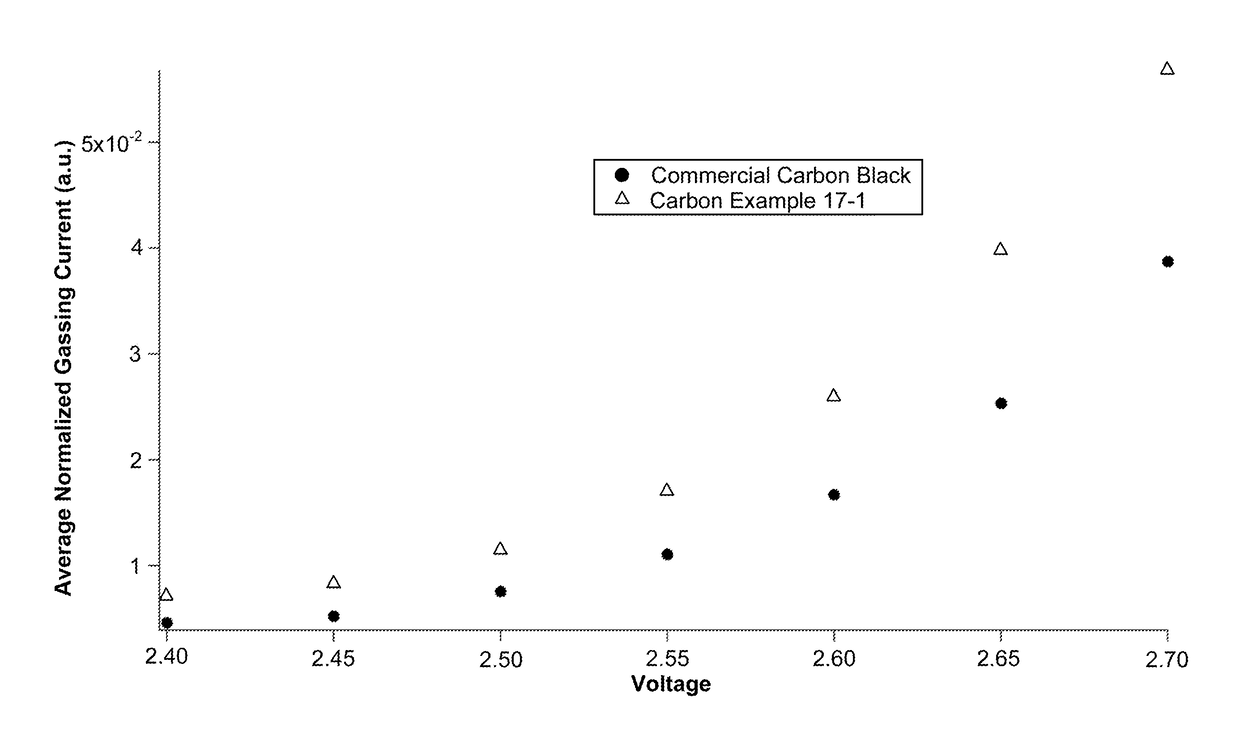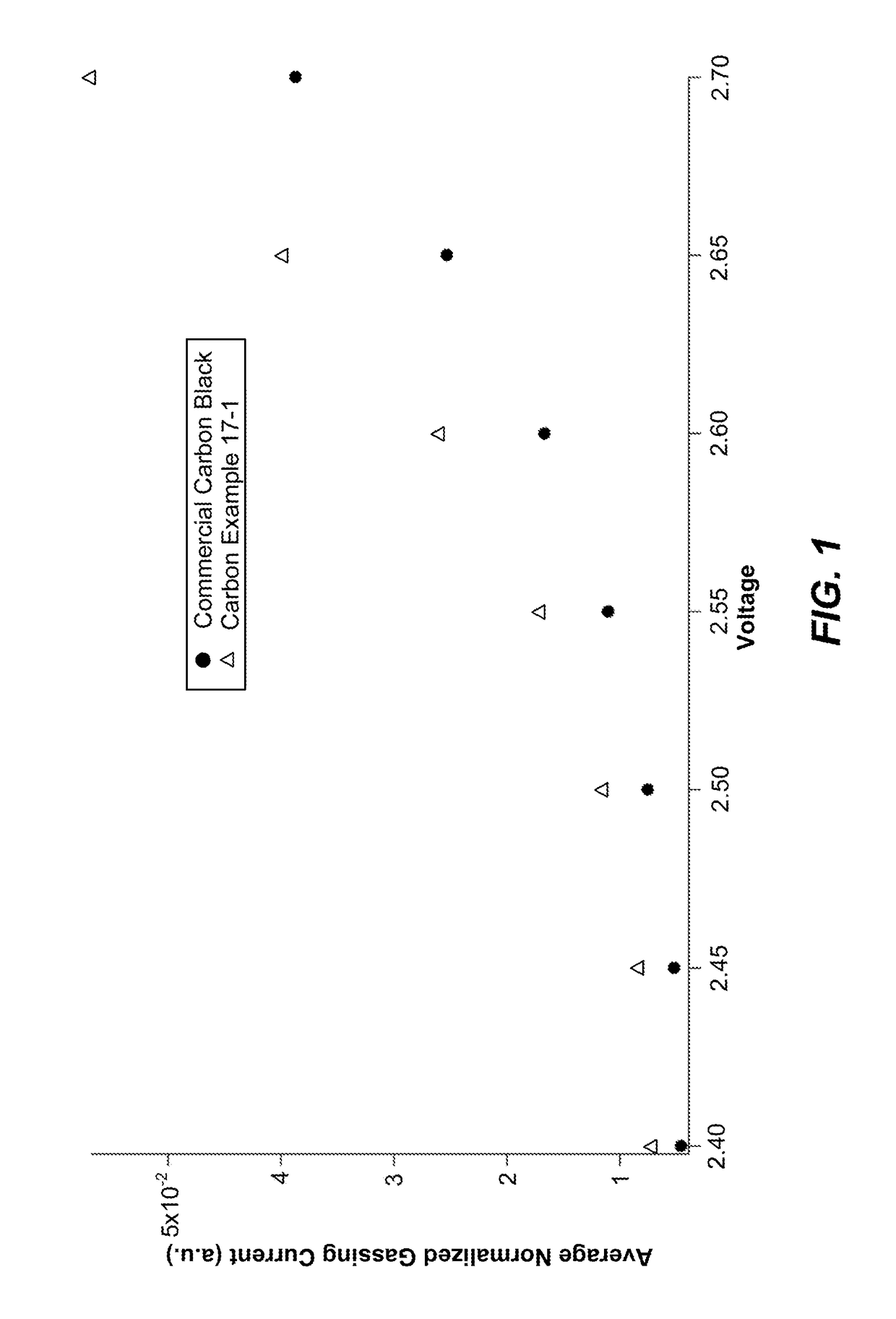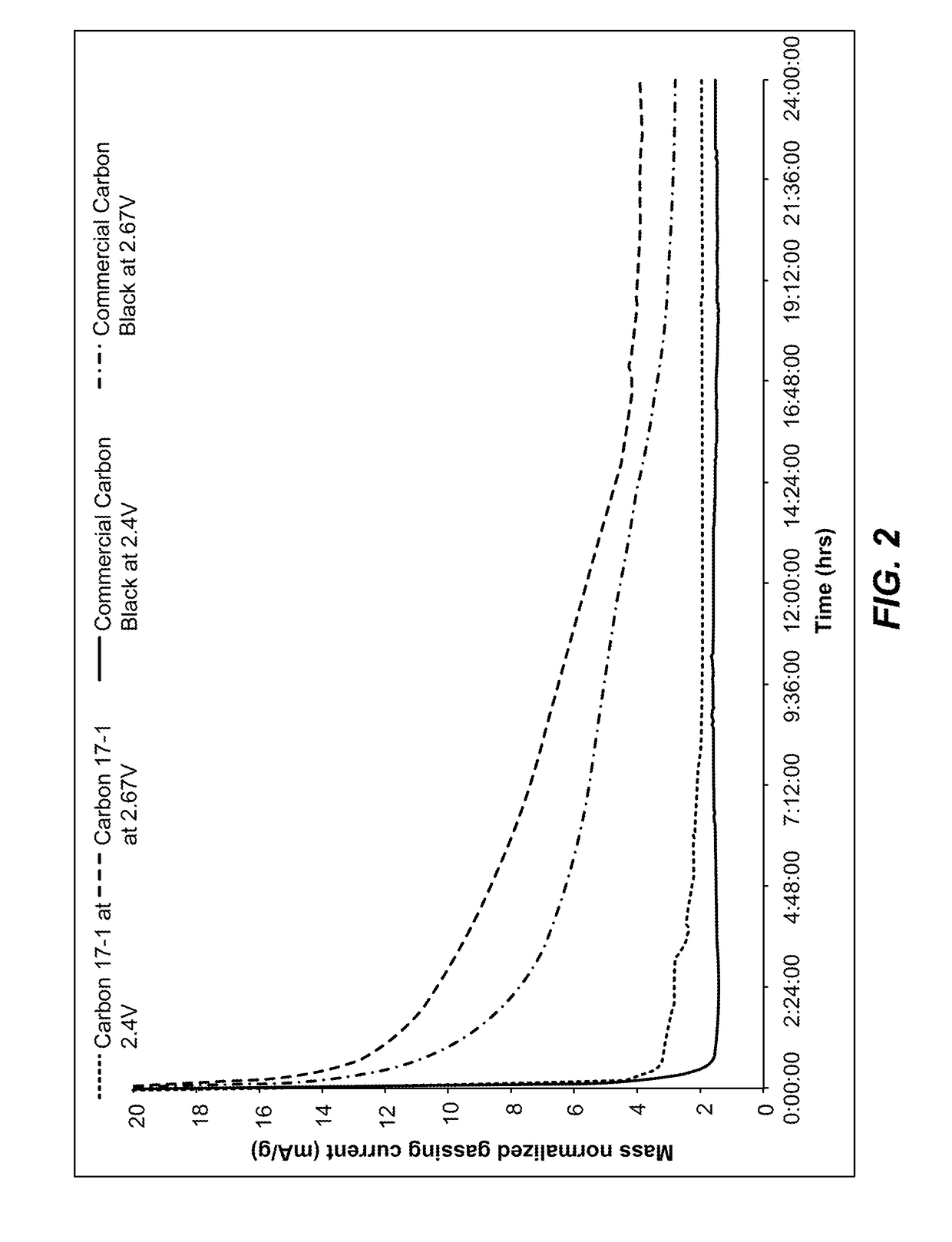Low-gassing carbon materials for improving performance of lead acid batteries
a technology of lead acid batteries and carbon materials, which is applied in the direction of batteries, sustainable manufacturing/processing, instruments, etc., can solve the problems of battery failure, increase the propensity, and increase the electrical energy consumption beyond
- Summary
- Abstract
- Description
- Claims
- Application Information
AI Technical Summary
Benefits of technology
Problems solved by technology
Method used
Image
Examples
example 1
Preparation of Dried Polymer Gel
[0249]A polymer gel was prepared by polymerization of resorcinol and formaldehyde (0.5:1) in water and acetic acid (75:25) and ammonium acetate (RC=25, unless otherwise stated). The reaction mixture was placed at elevated temperature (incubation at 45° C. for about 6 h followed by incubation at 85° C. for about 24 h) to allow for gelation to create a polymer gel. Polymer gel particles were created from the polymer gel and passed through a 4750 micron mesh sieve. The sieved particles were frozen by immersion in liquid nitrogen, loaded into a lyophilization tray at a loading of 3 to 7 g / in2, and lyophilized. The time to dry (as inferred from time for product to reach within 2° C. of shelf temperature) varied with product loading on the lyophilizer shelf.
[0250]The surface area of the dried polymer gel was examined by nitrogen surface analysis using a Micrometrics Surface Area and Porosity Analyzer (model Tri Star II). The measured specific surface area u...
example 2
Preparation of a Polymer Gel from Melamine Formaldehyde
[0252]A polymer gel was prepared by the polymerization of melamine formaldehyde with resorcinol (85:15). The reaction mixture was placed at elevated temperature (incubation at 90 C for 24 to 48 hours) to allow for gelation to create a nitrogen-rich polymer gel.
example 3
Preparation of a Polymer Gel from Melamine Formaldehyde with the Addition of Pluronic F127
[0253]A polymer gel was prepared by the polymerization of melamine formaldehyde with resorcinol and Pluronic F127. The melamine formaldehyde composed the base of the material and resorcinol was added in percentages ranging from 10% to 30% and Pluronic F127 was added in percentages ranging from 3% to 15%. The reaction mixture was placed at elevated temperature (incubation at 90 C for 24 to 72 hours) to allow for gelation to create a nitrogen-rich polymer gel with larger pore volume in the mesopore regime.
PUM
 Login to View More
Login to View More Abstract
Description
Claims
Application Information
 Login to View More
Login to View More - R&D
- Intellectual Property
- Life Sciences
- Materials
- Tech Scout
- Unparalleled Data Quality
- Higher Quality Content
- 60% Fewer Hallucinations
Browse by: Latest US Patents, China's latest patents, Technical Efficacy Thesaurus, Application Domain, Technology Topic, Popular Technical Reports.
© 2025 PatSnap. All rights reserved.Legal|Privacy policy|Modern Slavery Act Transparency Statement|Sitemap|About US| Contact US: help@patsnap.com



